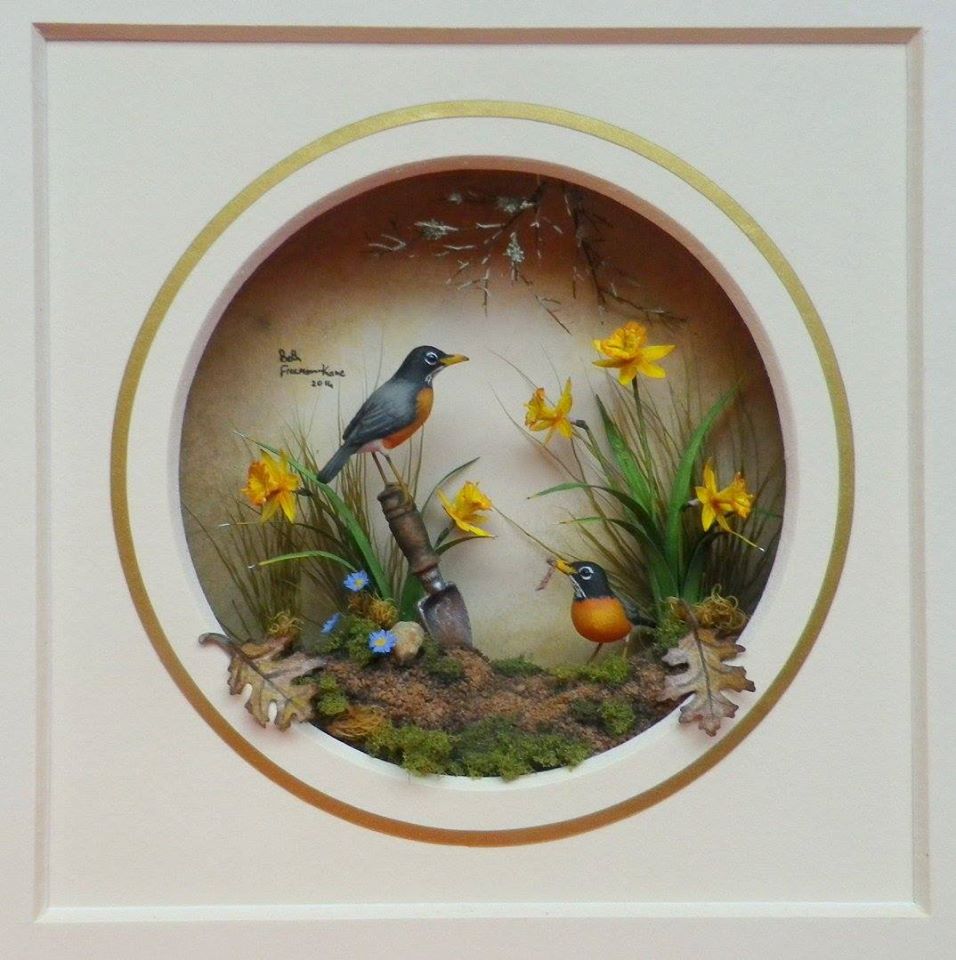Beth Freeman-Kane’s Wildlife Miniatures
How did you first get into miniatures?
I think I was born to make miniatures. I started when I was 5 and 6 years old. I would create tiny little things out of Play-Doh and plasticine.
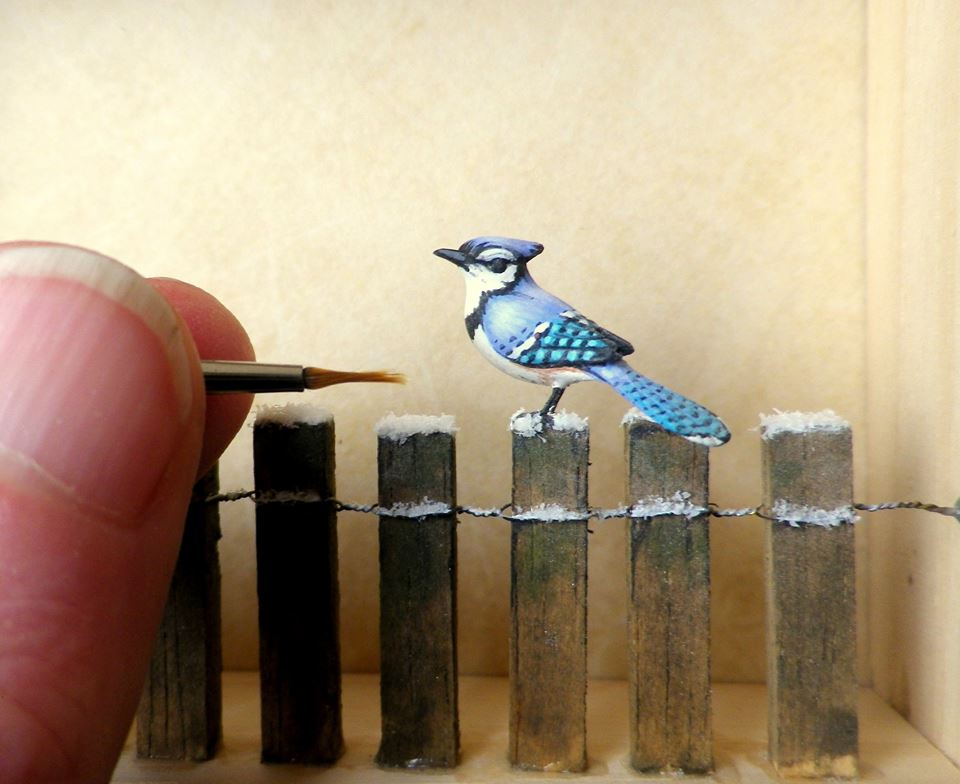 In first grade, I made a little elephant and my teacher was blown away. The teacher insisted I show the elephant to her colleagues.
In first grade, I made a little elephant and my teacher was blown away. The teacher insisted I show the elephant to her colleagues.
Throughout my teenage years, I focused my miniatures on a lot of cartoons, including Disney, Asterix, and Giles cartoons. At that time, I was using Fimo clay. When I was about 15 years old, I discovered polymer clay. A few years later, in my 20s, I began mold making and reproducing works in resin.
When I was in my late twenties or so, I realized how easily Fimo pieces could break, especially if I was working in exceptionally small detail, such as with a little beak or a tail extremity.
Were you formally trained in the arts?
I attended art school at university for 3 years, never completing my degree. The instructors at the time were quite hard on me and wanted to change my style. They tried and failed to get me to stop making such little things. After that, I began giving my miniature creations to family and friends. I remember quite a few Fimo ducks! Soon enough, a miniature shop in South Africa wanted to sell my work, and they successfully sold everything within the first week.
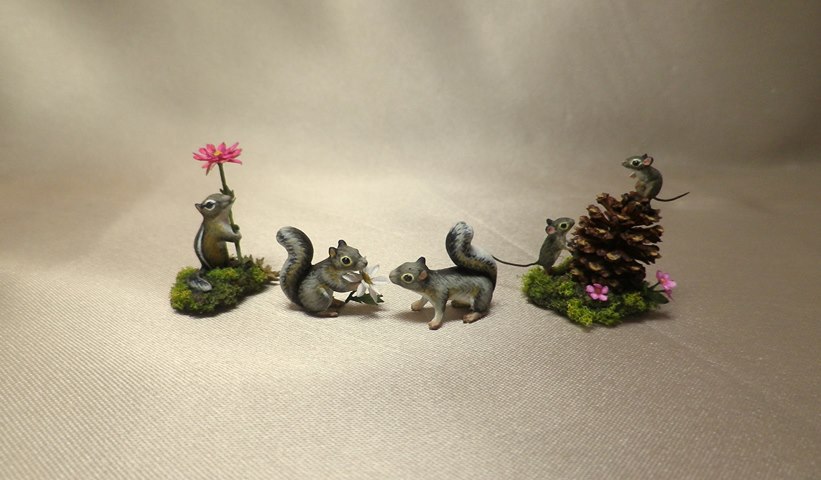 Were you always fascinated with wildlife?
Were you always fascinated with wildlife?
Yes, I’ve always focused on wildlife. From a very young age, I’ve held a passion for any living creature. Birds particular fascinate me, as there is so much variety within their species. There’s so much character and endless inspiration when it comes to birds.
What miniature animals will you focus on in the future?
I’m working on the idea of peacocks again. And I love my tiny mammals, especially mice, squirrels and chipmunks. I love meerkats as well, they’re perennial worldwide favorites. In the future, I’d love to do a hedgehog. First, I’ve got to work out how to realistically do their spines. And I’d love to do otters underwater!
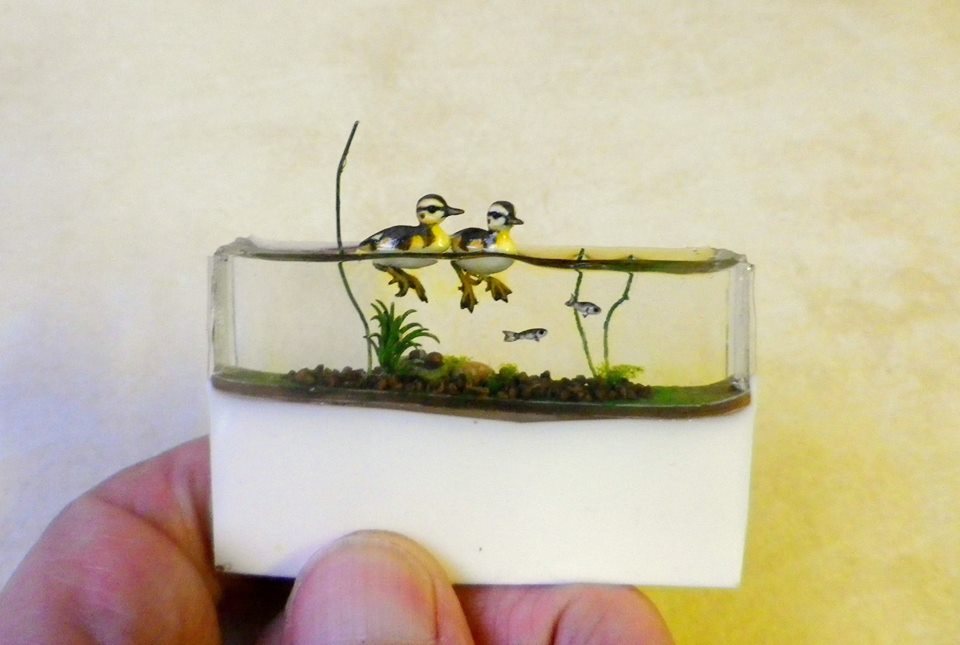 Can you describe your process when working with miniatures submerged in water?
Can you describe your process when working with miniatures submerged in water?
One of my new techniques is to work with resin. It took me about 12 days to create a framed piece that had ducks in water. I’m really excited about the concept of diving birds. Perhaps puffins chasing fish underwater. And I’d love to create frogs swimming with their legs out.
Describe your process. How long does it take to create a miniature work?
That’s one tough thing about being an artist and a Fellow of the Guild, preserving the highest standard of miniature work. The further I develop as an artist, the tougher I am on myself. It takes me longer to produce a piece and I add more and more detail each time. I aim to achieve realism and perfection and continue to push myself harder. Years ago, I could sit and paint 10 birds in one day. Now I can do about 3. I find myself wanted to blend the colors, to achieve the round sleekness of the bird, all the feather details. So I end up painting layers and layers of color on the piece. When working with resin as water, I want to ensure the animals are whipping with the current, and that they’re slanted and spaced different to appear more realistic.
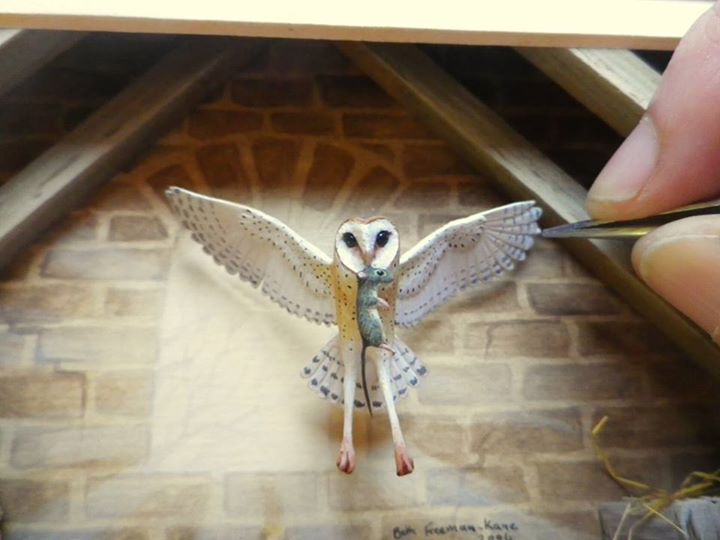 Do you have any favorite miniatures you’ve made?
Do you have any favorite miniatures you’ve made?
I’m quite proud of my new water works made out of resin.
Not too long ago, I made a beautiful barn owl flying into a barn, carrying a rat in its beak. That’s a piece that stands out in my mind.
My work is evolving all the time, as is my process. I’m always meeting new situations in the work so I have to innovate on the spot.
Sources or books you cannot live without?
I use the Internet frequently to find images of animals I’m working on in miniature. I collect bird books and have a number of field guides at home. I started out with only South African field guides and then expanded into American and European guides as my market extended to that side of the world. I aim to create pieces that will appeal to those audiences. The house sparrow, for instance, is universal and you’ll come across the same type of bird in every country across the globe. It’s a very uniting muse, and I enjoy the “every man” aspect of the sparrow.
My favorite book—I call it my “bird bible” actually—is the Sasol Birds of South Africa.
Materials you love to use in your work?
I use deer hair to make grass; bees wings to make dragonfly wings; parakeet feathers to make bird feathers; and the skeleton of coral to make the effect of little dead branches in scenes. I use only animal materials that have died of natural causes and donated their bodies to art. I’ve previously used driftwood found high up in the mountains that needed to be treated, baked and soaked in peroxide. I love using the calcified coral as it doesn’t decay and nothing eats it – it’s a rather inert, natural substance.
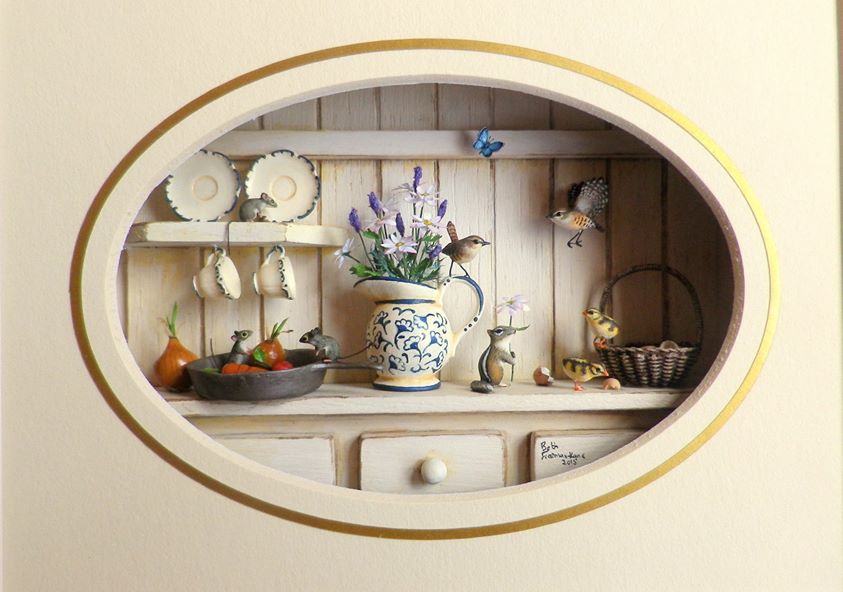 Advice you would share with a new artist?
Advice you would share with a new artist?
I was lucky to have a supportive family who always liked what I was doing. They would say, “that’s marvelous! Make another one!” If I hadn’t had the support of my family, I might have lost it. I was very discouraged at times throughout school. And though my first grade teacher so loved my work, after that point, instructors always encouraged me to draw bigger to “fill the page” as if a picture had to be big to be validated.
How has the International Guild of Miniature Artisans played a role in your work?
The Guild has been a major part of my growth as an artist. In my early career, I was on my own. I thought I was the only one in the world crazy enough to make little things. Finding out about such a formal movement with other passionate people was very special for me. And now I’m able to earn a living making miniatures that I love. I never dreamt of being able to do this! I always thought it would be a hobby, just on the side. So, the IGMA Guild has played a very important part in my career and I was accredited with both Artisan status and Fellowship.
What do you want miniature enthusiasts to know about you?
I like to go sit outside in the sun for about 10 minutes during the workday. I enjoy watching the birds and watching the trees. There’s so many birds in the area in which I live so I get to see them every day. And I have a lot of pets at home: 6 dogs, 3 cats, 1 pig and 1 parakeet.
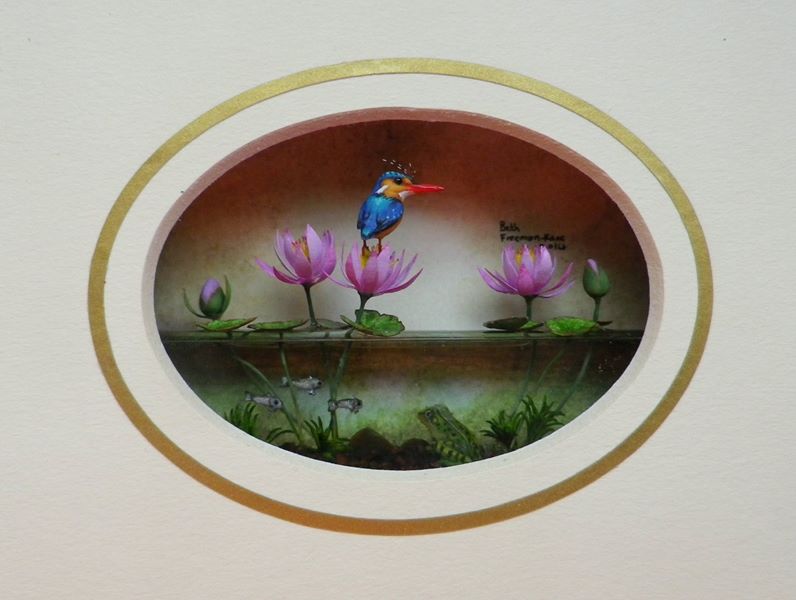 I have a passion for the environment. I love coming across details in nature that people don’t usually notice. And miniatures are the same, as they grab your attention and show you an aspect into another dimension of beauty in the world. People might have not noticed that before. So, I hope my work gives them that. A second chance to go back and appreciate the little things.
I have a passion for the environment. I love coming across details in nature that people don’t usually notice. And miniatures are the same, as they grab your attention and show you an aspect into another dimension of beauty in the world. People might have not noticed that before. So, I hope my work gives them that. A second chance to go back and appreciate the little things.
That’s what’s so nice about framed pieces. It’s a cross-over boundary between the miniature world and the non-miniature world. You can simply hang my work on a wall in your home. You don’t need a dollhouse. Because it’s art.
Back home, many of my clients don’t know much about the miniature world. They love my work, and they love birds and little scenes. So, it’s a tricky balance to keep myself stimulated while creating my pieces and still staying connected to the world of miniatures. Thankfully the Guild offers exhibitions and the annual IGMA Guild School as vital opportunities to connect with other miniaturists. I’m given the chance to show my work, not just sit as a solitary art ant in my studio all day. It’s wonderful to give and receive encouragement from other artists. It revitalizes us. We learn new techniques, stories, and more – and we can share them all within such a supportive community.
Wildlife Miniaturist Beth Freeman-Kane is a 6th year instructor at the IGMA Guild School in Castine, Maine. She creates “A World in the Palm Of Her Hand” with her impeccably detailed wildlife miniatures. To view more of her work, visit her website or follow along on Facebook.
